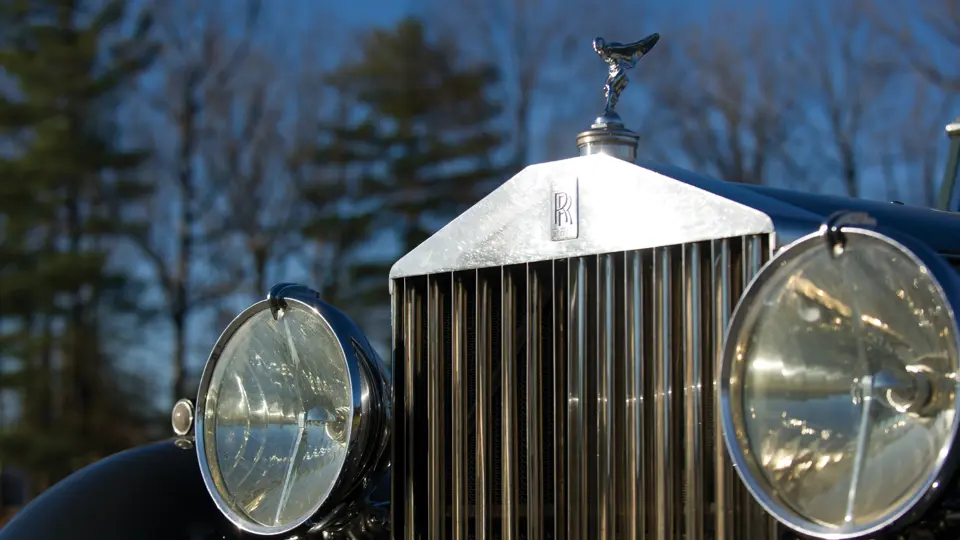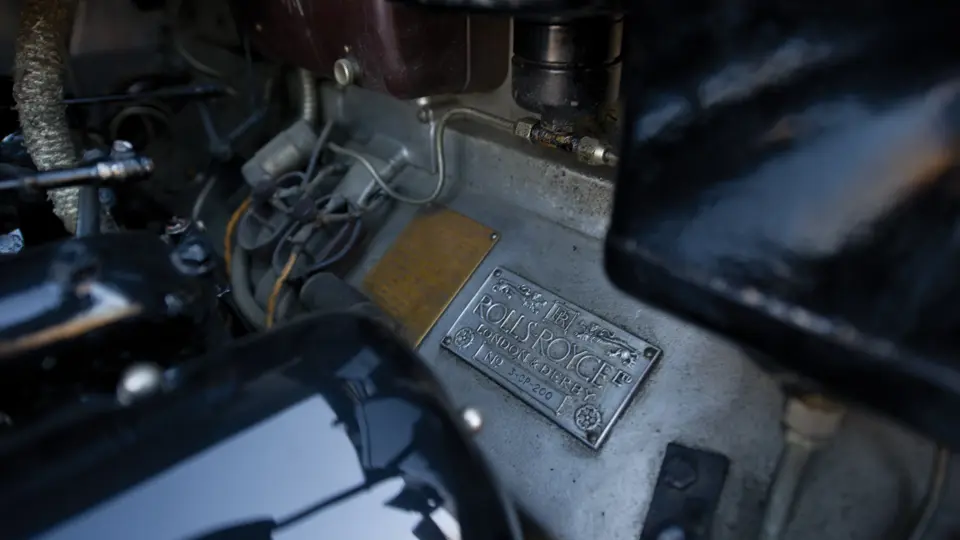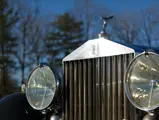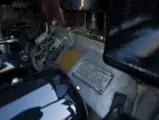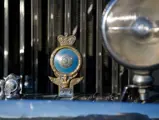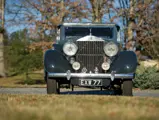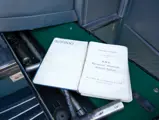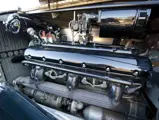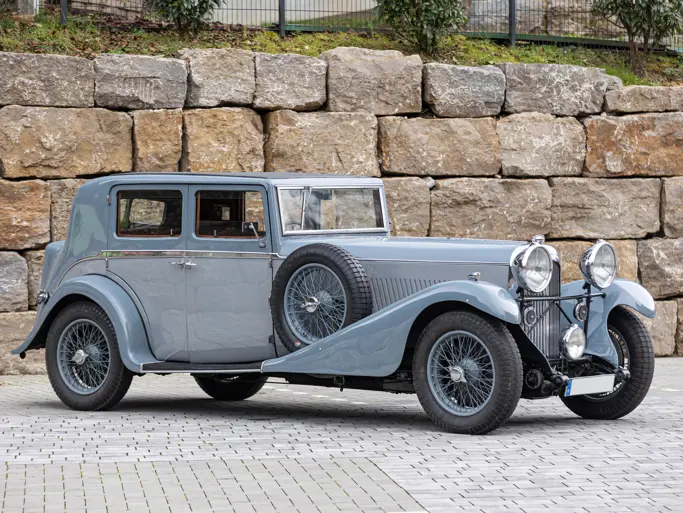165 hp, 7,340 cc OHV V-12 engine with dual ignition, separate four-speed manual gearbox, independent front suspension by coil springs, live rear axle with semi-elliptic leaf springs, and four-wheel servo-operated drum brakes. Wheelbase: 140 in.
• One of 20 PIII Sedanca de Villes by Hooper
• One of only two Design 7060 PIII Hooper Sedanca de Villes
• Identical to Hooper’s 1937 Earls Court Show Car
In 1935, Rolls-Royce replaced the Phantom II with its first 12-cylinder model, the Phantom III. More compact than the straight-six Phantom II engine, the firewall could be moved forward about eight inches, allowing coachbuilders to create more spacious passenger compartments. The Phantom III chassis was massively overbuilt, providing a strong platform for large bodies. The forward position of the engine allowed for many innovative body designs, though most PIIIs were formal town cars and limousines, not stylish Sedancas, such as this example.
The PIII was well-received by well-heeled buyers, and the British magazine The Autocar published an extensive road test of it in its October 2, 1936 issue, sub-titled, “Road Travel In Its Most Advanced and Refined Form Provided by the New Twelve-Cylinder Model.”
The new 7,340-cubic centimeter engine was 328 cubic centimeters smaller than the Phantom II, but its output was greater. The powerful 12-cylinder engine was matched with a new suspension, with shock absorbers adjusted by the driver. It delivered comfortable high-speed touring, and it was able to maintain 80 mph for hours.
Pre-war coachbuilders often shared design cues, and this particular Hooper PIII reflects the finest French car bodies, like those from Saoutchik and Henri Chapron. Significantly, this car carries its original Hooper Sedanca de Ville body; its twin was shown at the 1937 Earls Court Motor Show.
Hooper & Co. (Coachbuilders) Ltd. was one of the most respected English coachbuilders, and it operated from 1905 to 1959, carrying royal warrants from 1930 until 1946. Most Hooper body orders came from Rolls-Royce, but a few early commissions were from Daimler. Clients included the Emperor of Japan, the King of Egypt, King Edward VII, Prince Hamiddulah of Bhopal, and the Shah of Persia. After the WWII, one of Hooper’s first commissions was for a convertible body for the King of Arabia, also on a Rolls-Royce Phantom III chassis.
The original owner of 3-CP-200 was royalty, too, royalty of the ’30s media genre—bon vivant Captain Alastair W. Mackintosh, who was married to a Hollywood film star, Constance Talmadge. Well-known in both London and Palm Beach, Life magazine featured the couple in a two-page photo-essay in the March 20, 1939 issue. A copy is included with the car, along with his autobiography, No Alibi.
In 1940 or 1941, Captain Mackintosh sold the car to Mary Bruce, a race car and speed boat driver, an aviatrix, and a multi-millionaire businesswoman. Her biography, Nine Lives Plus, is also included with the car, in which the Rolls is both mentioned and pictured. She owned the car until the late-1970s, when she sold it to I. I. Gordon, in England. The next owner was Frank Dale, a well-known Rolls-Royce and Bentley dealer who bought the Phantom III for his personal use. More recently, it was part of a large car collection in Dubai.
This stunning car is well-documented. It is pictured on page 126 of Lawrence Dalton’s archival book on Rolls-Royce coachwork, Those Elegant Rolls-Royce, and listed on page 251 of Nick Whitaker’s publication, Rolls-Royce Phantom II and III. Its photograph and description also appears on page 161 of 1994’s The Phantom III Directory and Register.
The majority of Phantom III cars were formal limousines. This car is distinctive because of its history, its sporty lines, and its unmolested, original condition. Its styling defines French curves, as the lines flow rearward, dovetailing at the rear bumper. The French blue, two-tone paint crests the wing tops and wheel spats, while the polished spears draw the eye to the car’s waist.
Hooper fitted its patented metal roof, which transforms the driver’s compartment from open to closed position, and the car was correctly repainted by Hooper in 1954. Panel fit is excellent, and though the paint shows some patina, it could be considered too good to restore. Standard in chauffeur-driven cars, the drivers’ compartment is finished in leather, while the passenger area is upholstered in wool cloth. Fitted Wilton carpet complements the Deco-inspired wood trim, which is finished in the body color.
The interior was recently reupholstered as original, and the car has just been serviced. The fortunate new owner of this documented Rolls-Royce will be pleased to find the car is ready to drive or show, and that it retains the original owner’s manual and its complete set of tools.
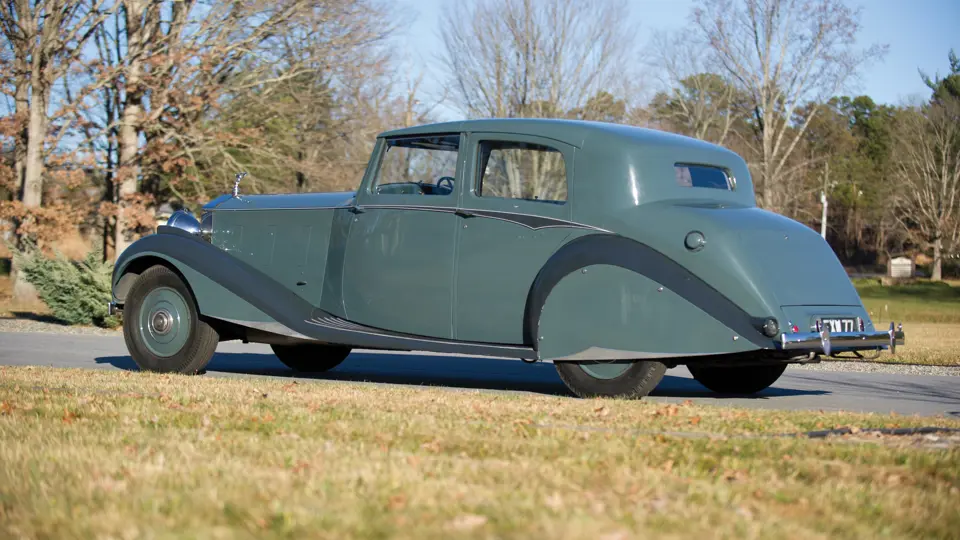



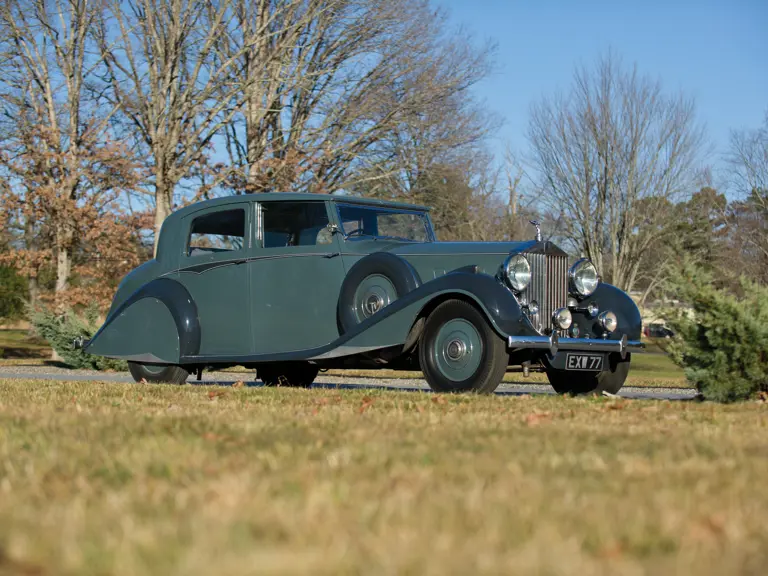
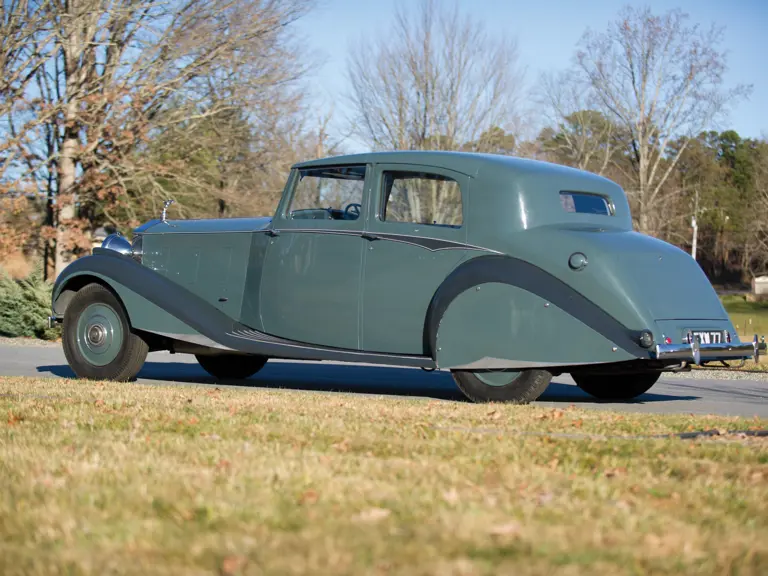
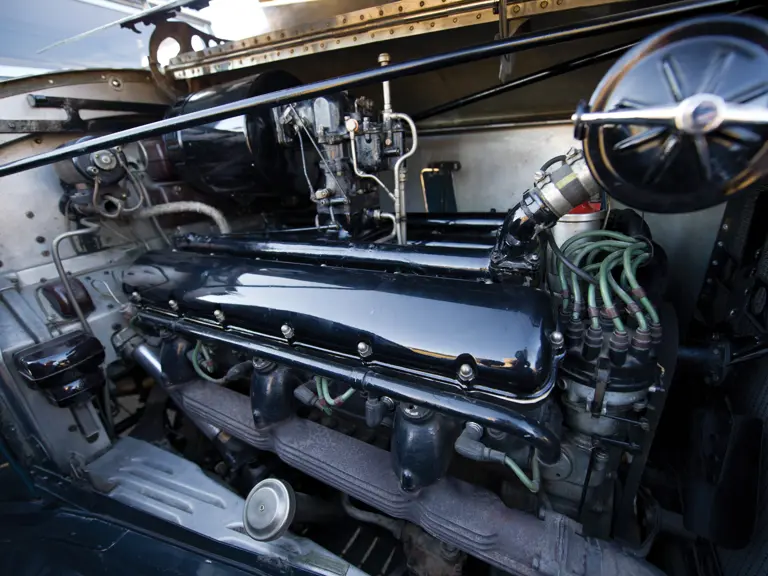
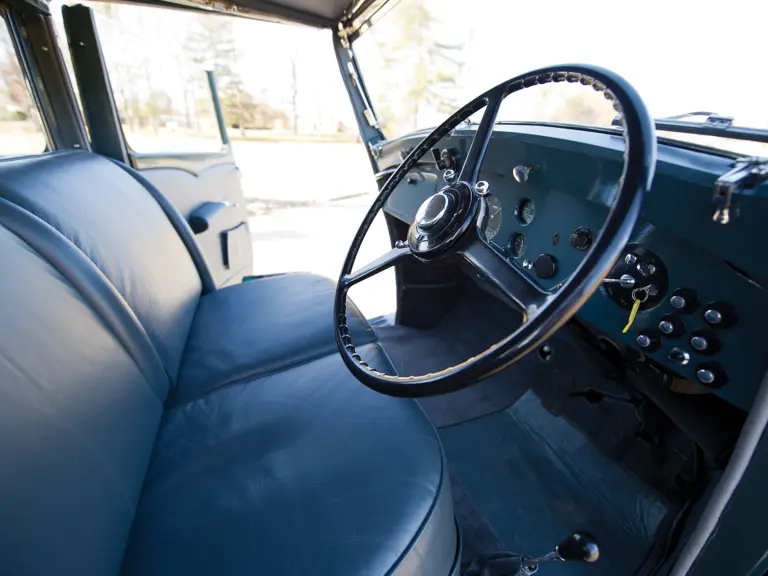
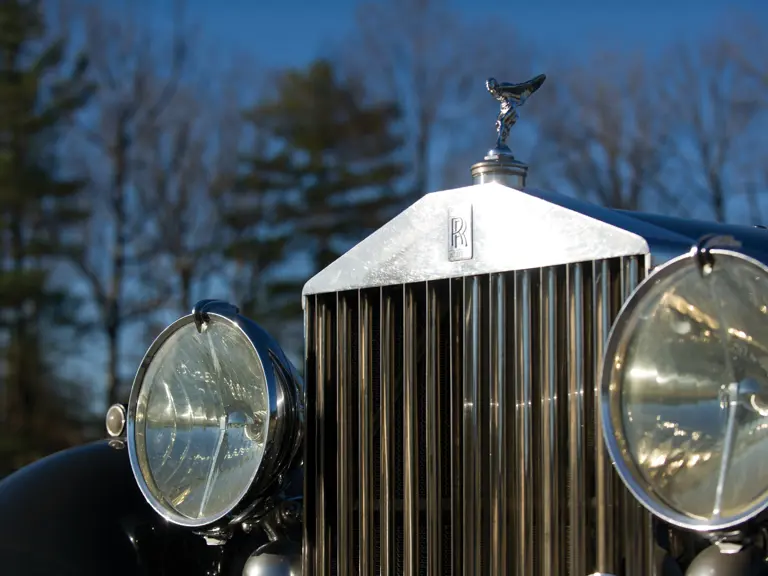
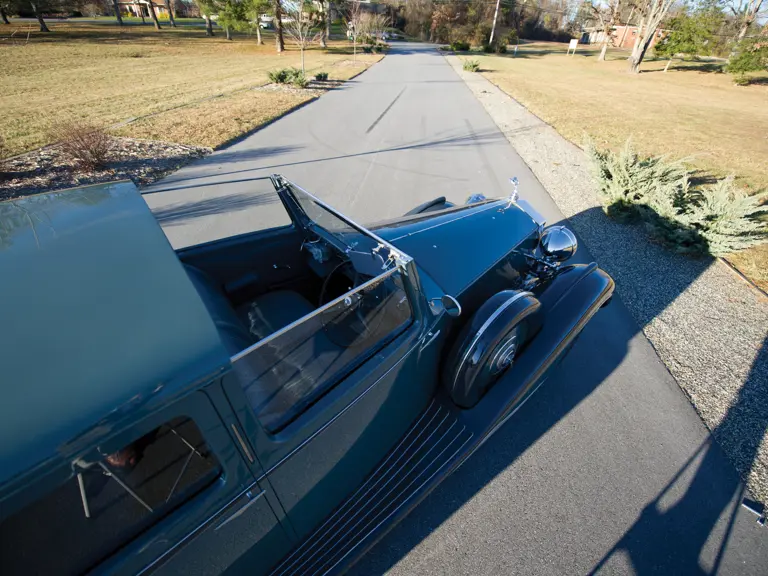
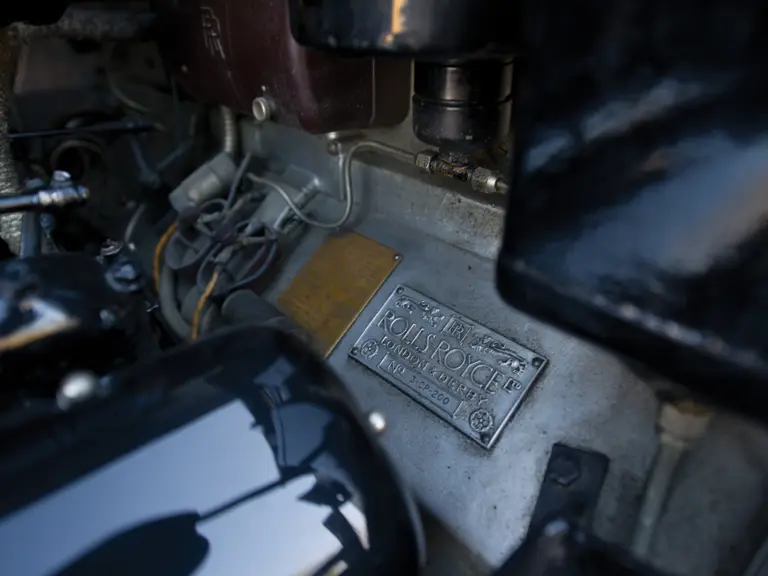


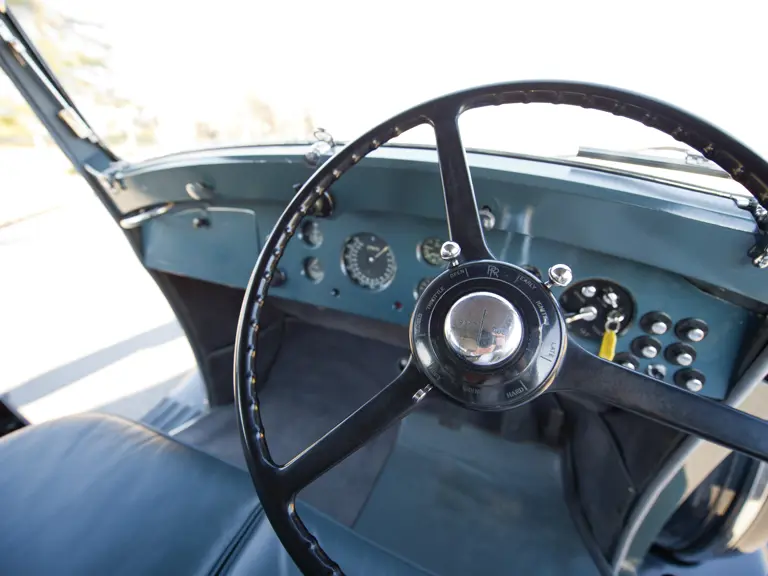
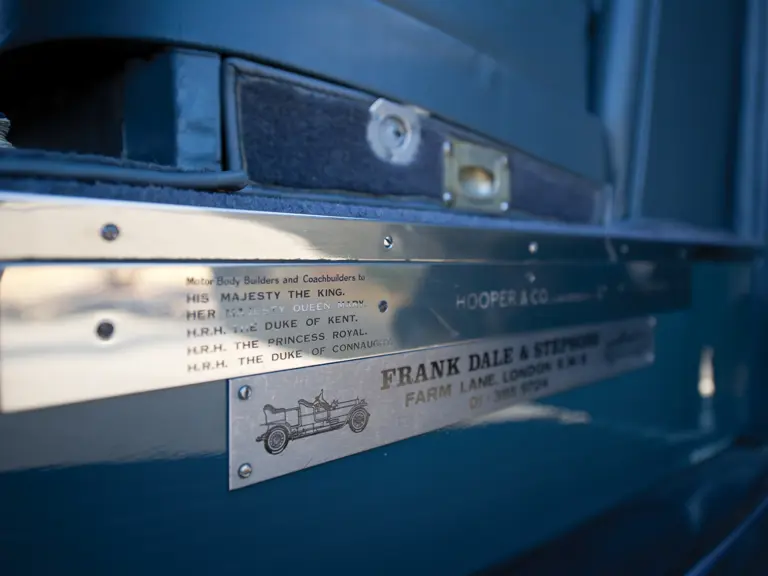
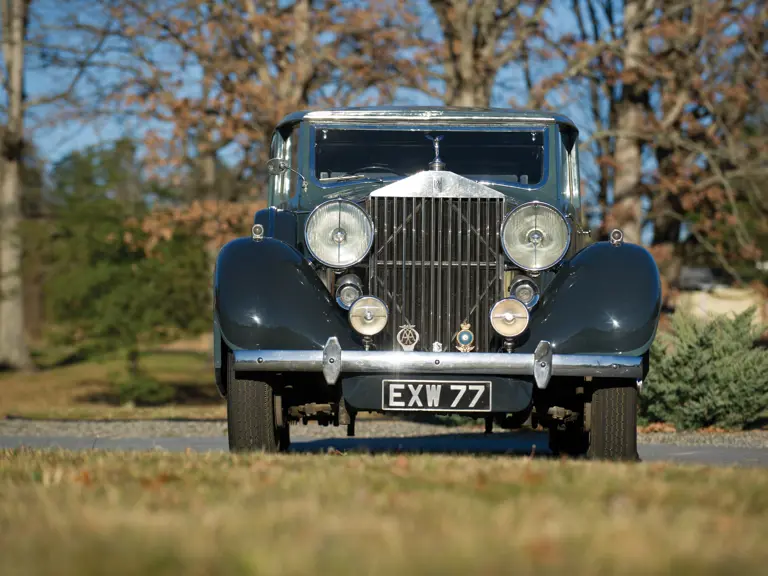
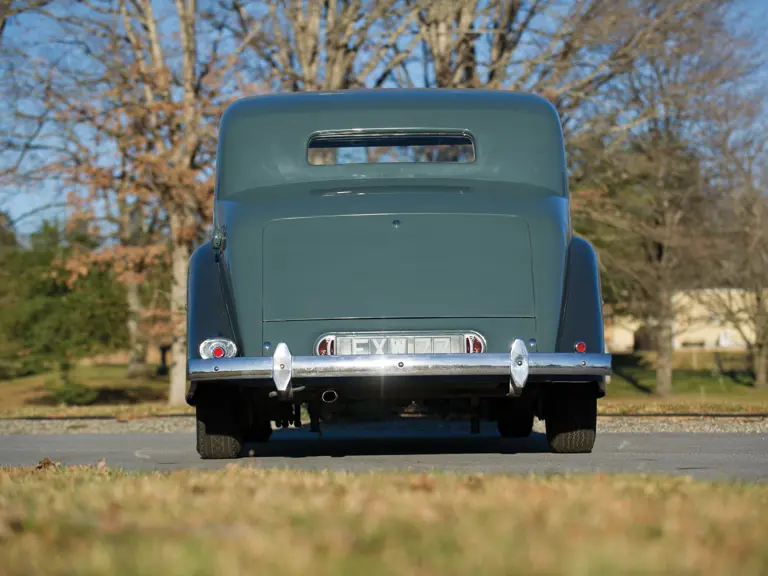
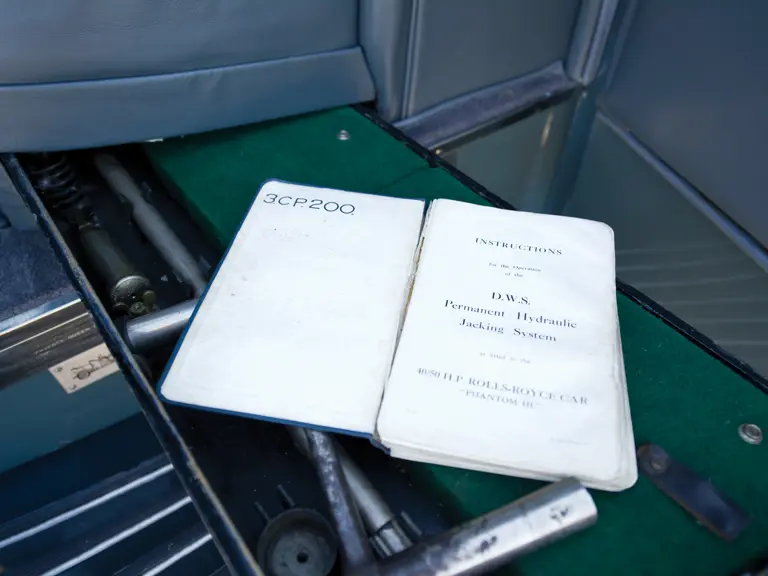

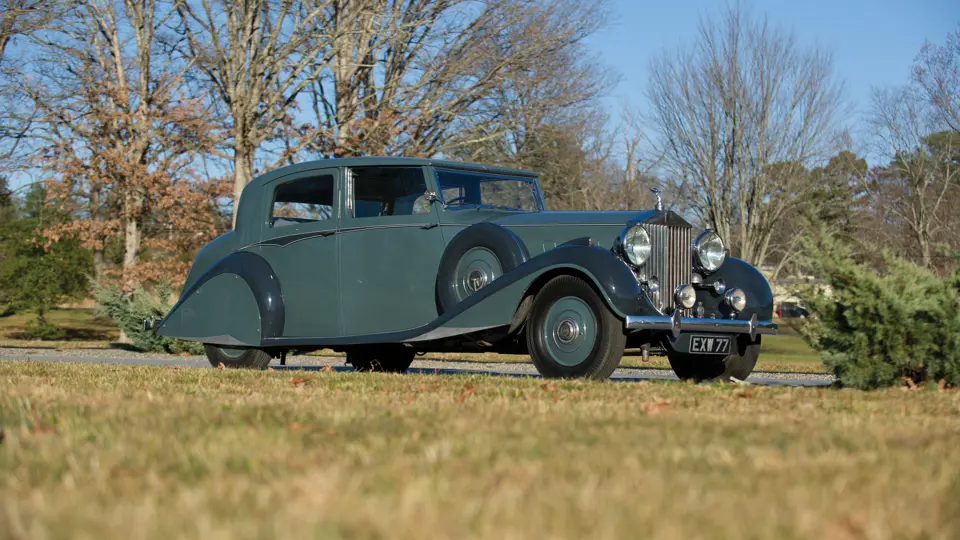
 | Phoenix, Arizona
| Phoenix, Arizona
